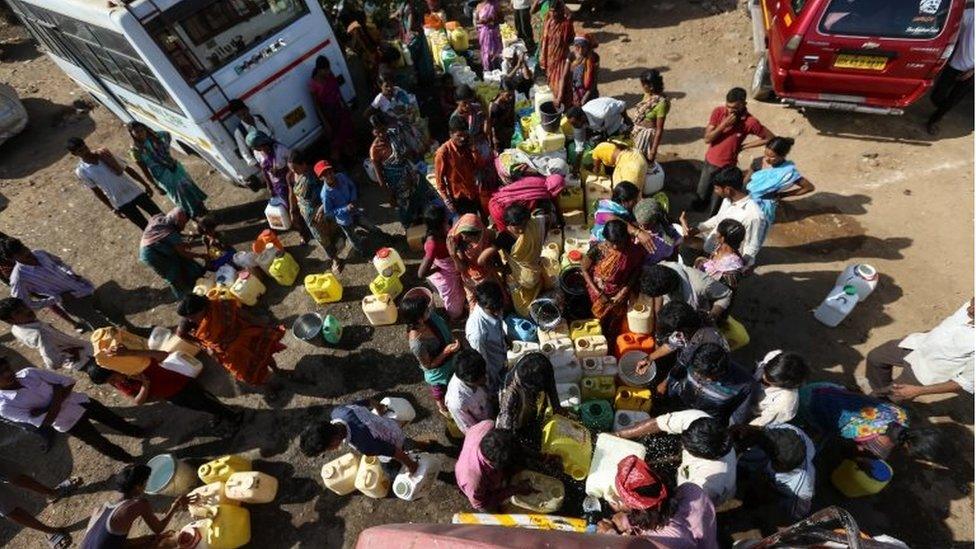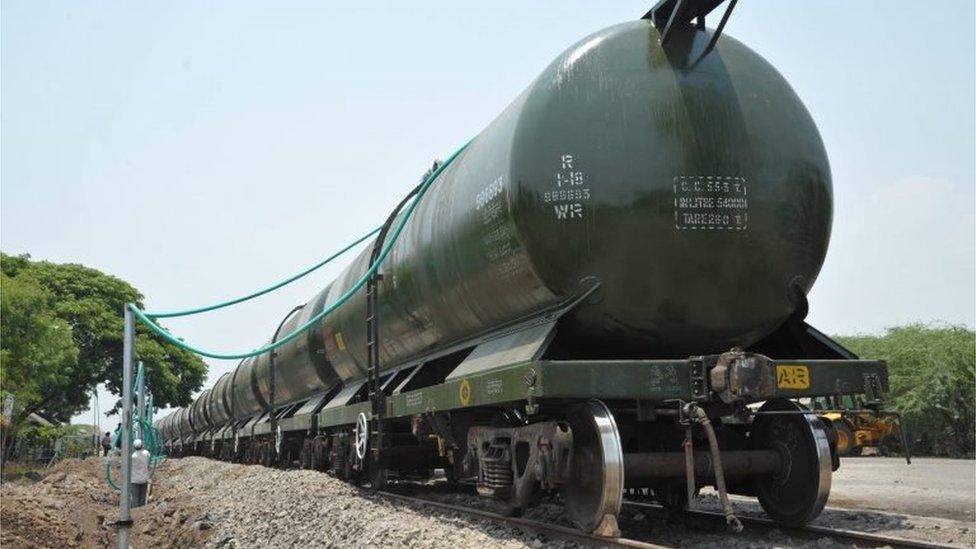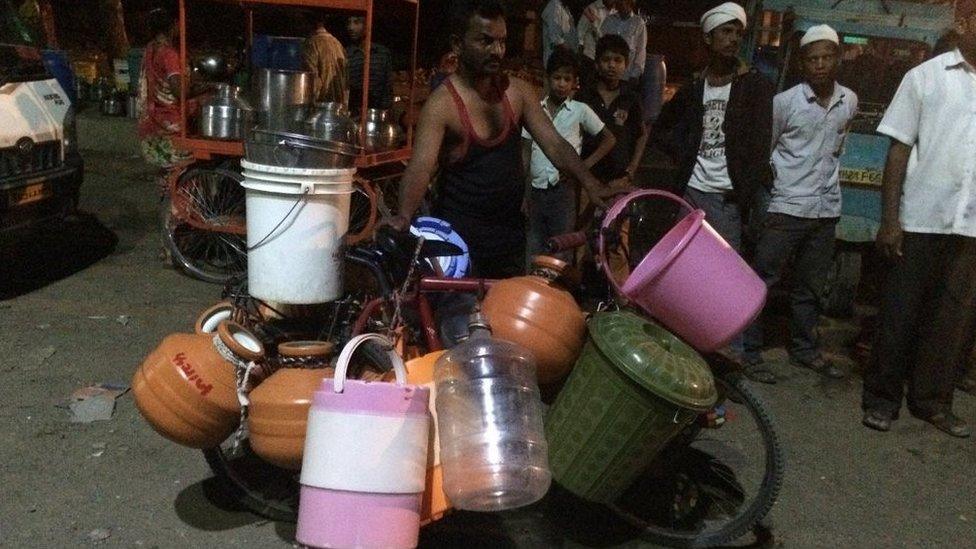India drought: '330 million people affected'
- Published

India is heavily dependant on monsoon rains which have been poor for the past two years
At least 330 million people are affected by drought in India, the government has told the Supreme Court
Authorities say this number is likely to rise further given that some states with water shortages have not yet submitted status reports.
The drought is taking place as a heat wave extends across much of India with temperatures crossing 40C for days now.
An 11-year-old girl died of heatstroke while collecting water from a village pump in the western Maharashtra state.
Yogita Desai had spent close to four hours in 42C temperatures gathering water from the pump on Sunday, local journalist Manoj Sapte told the BBC.
She began vomiting after returning home and was rushed to hospital, but died early on Monday.
Yogita's death certificate says she died of heatstroke and dehydration.
The pump was a mere 500m from her house, but a typical wait for water stretches into hours.
India is heavily dependant on monsoon rains, which have been poor for two years in a row.
The government said that nearly 256 districts across India, home to nearly a quarter of the population were impacted by the drought.
Schools have been shut in the eastern state of Orissa and more than 100 deaths due to heatstroke have been reported from across the country, including from the southern states of Telangana and Andhra Pradesh which saw more than 2,000 deaths last summer.

The drought is taking place as a heat wave extends across much of India with temperatures exceeding 40C for several days in a row

Another water train carrying 2.5 million litres of water is scheduled to reach Latur in Maharashtra on Wednesday

There is growing public concern over the lack of water in the country
The western state of Maharashtra, one of the worst affected by the drought, shifted out 13 Indian Premier League (IPL) cricket matches due to be played in the state next month because of the amount of water needed to prepare pitches.
There is growing public concern over the lack of water in many parts of the state following two successive years of drought and crop failures.
The government has asked local municipalities to stop supplying water to swimming pools and, in an unprecedented move, a train carrying half a million litres of drinking water was sent to the area of Latur.
Another train carrying 2.5 million litres of water is scheduled to reach there on Wednesday.
States like Punjab and Haryana in northern India are squabbling over ownership of river waters.
In water-scarce Orissa, farmers have reportedly breached embankments to save their crops.
Water availability in India's 91 reservoirs is at its lowest in a decade, with stocks at a paltry 29% of their total storage capacity, external, according to the Central Water Commission.
Some 85% of the country's drinking water comes from aquifers, but their levels are falling, according to WaterAid, external.
- Published27 March 2016
- Published13 April 2016

- Published12 April 2016
